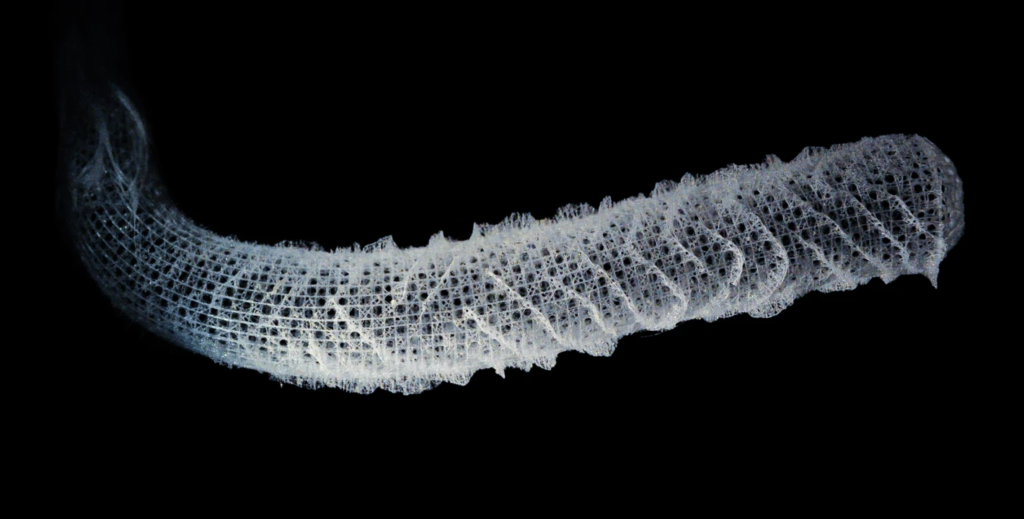
Marine sponges like the Venus’ flower basket (Euplectella aspergillum) look like an otherworldly creature one would expect to find on an alien planet. These glassy sponges resemble vases or sculptures but don’t let their fragile appearance fool you — their skeleton is extremely strong. In fact, the structure is so strong that engineers are now mimicking it for the next generation of stronger and taller buildings, longer bridges, and lighter spacecraft.
Bioinspired architecture
In their new study, which was published today in the journal Nature Materials, researchers at Harvard’s John A. Paulson School of Engineering and Applied Sciences (SEAS) analyzed the skeletal structure of Venus’ flower basket.
Similar to today’s tall skyscrapers or bridges, the sponge’s skeleton is arranged in a diagonally-reinforced square lattice-like structure. However, the lattice has an even higher strength-to-weight ratio than traditional lattice designs employed for centuries in architecture and engineering.
“We found that the sponge’s diagonal reinforcement strategy achieves the highest buckling resistance for a given amount of material, which means that we can build stronger and more resilient structures by intelligently rearranging existing material within the structure,” said Matheus Fernandes, a graduate student at SEAS and first author of the paper.
“In many fields, such as aerospace engineering, the strength-to-weight ratio of a structure is critically important,” said James Weaver, a Senior Scientist at SEAS and one of the corresponding authors of the paper. “This biologically-inspired geometry could provide a roadmap for designing lighter, stronger structures for a wide range of applications.”
Diagonal lattice designs that employ closely spaced diagonal beams enable loads to be more evenly distributed. Since the 1800s, this architecture hasn’t changed very much.
“It gets the job done, but it’s not optimal, leading to wasted or redundant material and a cap on how tall we can build. One of the main questions driving this research was, can we make these structures more efficient from a material allocation perspective, ultimately using less material to achieve the same strength?” said Fernandes.
Venus’ flower basket has a tubular body that is supported by two sets of parallel diagonal skeletal struts. These intersect with each other and are fused to an underlying square grid, forming a checkerboard-like pattern.

Mathematical modeling, as well as experiments, showed that replicated designs inspired by the sponge’s skeleton outperformed existing lattice geometries widely employed in the field of engineering. Overall, the structural strength increased by more than 20% — all without the need for additional materials to achieve the same effect.
“Our research demonstrates that lessons learned from the study of sponge skeletal systems can be exploited to build structures that are geometrically optimized to delay buckling, with huge implications for improved material use in modern infrastructural applications,” said Katia Bertoldi, the William and Ami Kuan Danoff Professor of Applied Mechanics at SEAS and a corresponding author of the study.









